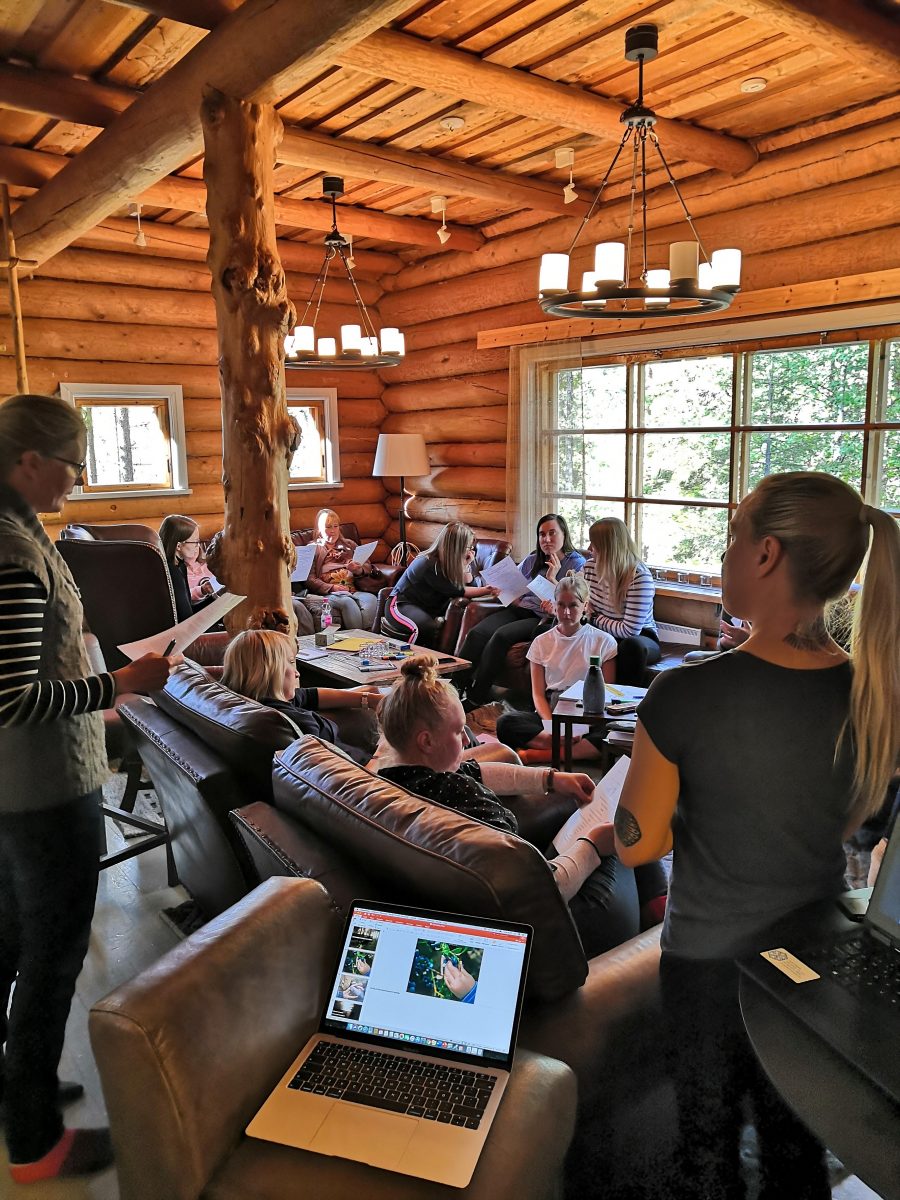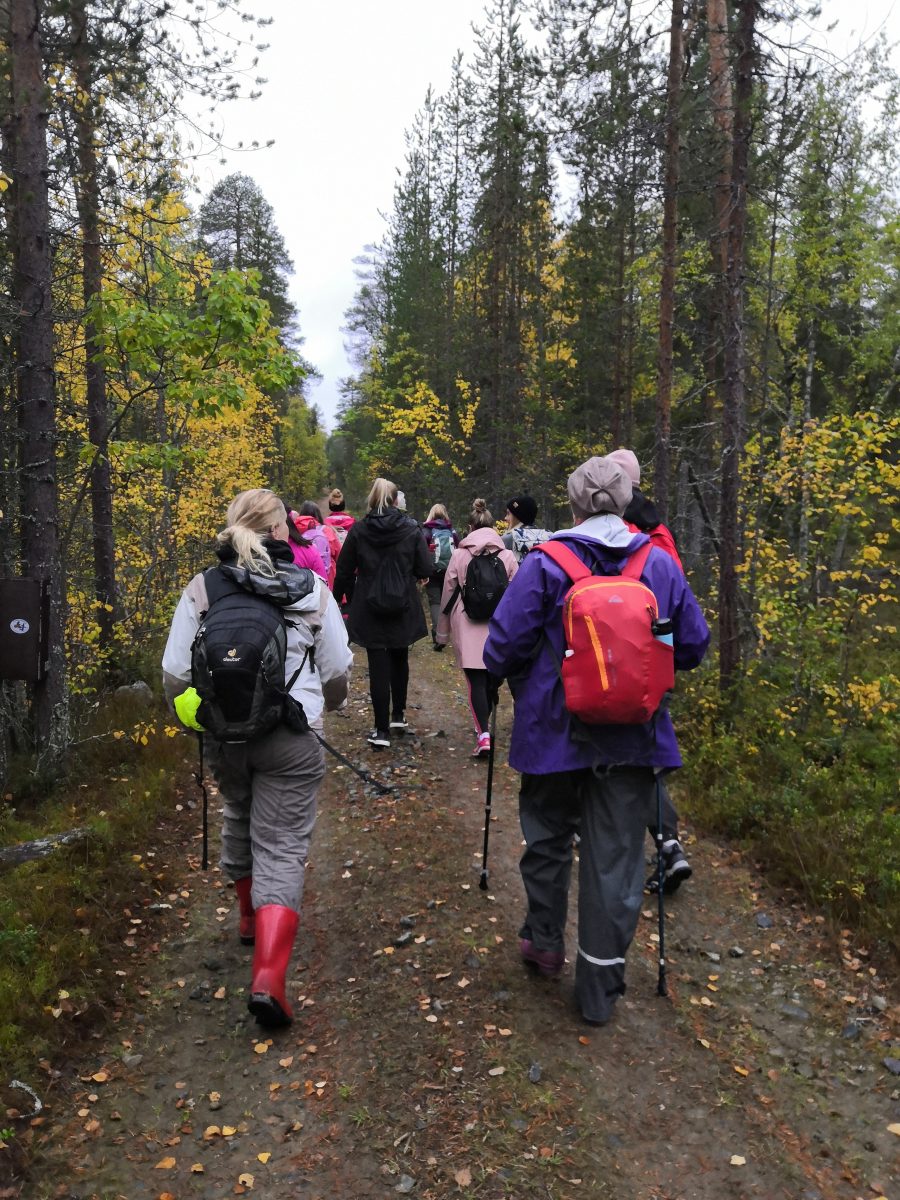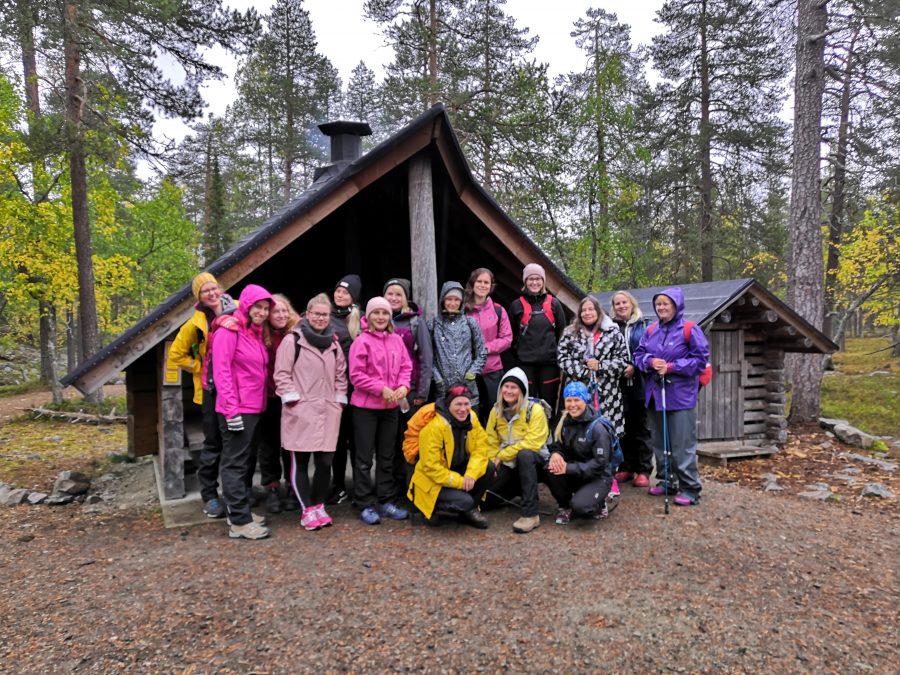In September 2019, we had a pleasure to arrange a field course with tourism master students from the University of Lapland, with an emphasis on tourism destination development. Our intention was to connect our project Envisioning proximity tourism with new materialism with the course content, and to mentor future tourism professionals to create new, more ethically sound narratives of tourism. Our task, as educators and practitioners of tourism research, is both to help the tourism students to recognize the current state of our planet to empower them to vision a more sustainable future and to enable them create means to support that vision to become a reality.

As such, the field course worked towards the same aim as our project: creating novel narratives of tourism that are based on ethically sound premises. These narratives also identify practices of care as one key element, which attunes humankind to the rich complexity of more-than-human nature. Novel narratives can make us see why we all have an ethical and moral responsibility to care about the future of our nature, proposing an ethico-politically charged impulse to act – to make a change. In order to make a change, however, we need more than words: we need to start building new visions and make them a reality. This demands creativity and bravery, and a big doze of imaginary and inspiration. This is what our field course with this wonderful group of students was loaded with.
For five days, a group of 12 students was dedicated to work towards a shared goal. They applied the central methodological approach of our project in their group assignment, that is, a participatory more-than-human ethnography in order to envision ethically sound tourism futures. We hoped that the utilization of this methodological approach would help the students to learn what it means to know-with and learn-from the rich variety of Earthly creatures in the forests and fells of a particular national park. The premises of Pyhä-Luosto National Park provided a wonderful place to work in with the students, and to build a bridge between the project and teaching.

As an outcome of the students working creatively for three days, three amazing stories became a reality, making us both very proud of the students. The groups combined various sensory, social and temporal elements in their stories, such as movement (walking), touch, silence and sound, creating affective experiences and building attentiveness to the more-than-human complexities in the nature park. Through these stories, we could all dwell together, getting lost in our sense of current time, arriving to places and routes perhaps familiar to us from our earlier experiences, but appearing as anew. We named stones, looked up, looked down, took forest naps, touched trees, stones and lichen, followed clues from the Earthly inhabitants through photographs, held hands, said thank you to the water, travelled through all four seasons of the year in the North, wished a chosen tree good winds for the future, closed our eyes and again opened them to see how we live our lives not isolated from the Earth, but fundamentally engaged with it – us being part of a wider story.
The field course launched the empirical field work of the project, and it filled us with inspiration and fresh ideas for the upcoming years. Central lessons learnt from the students were the importance of openness towards others and respectful atmosphere, the value of sharing time together – either silent, walking or having a good discussion or dinner, and the prestige of having freedom to choose your own working methods and practices. With these lessons learnt, we look forward to engaging in the envisioning of proximity tourism in the future steps of our project!
Tarja & Outi
